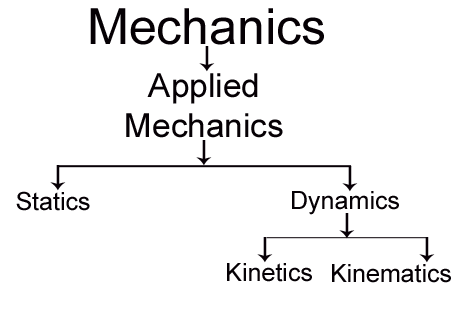Fundamental concepts and principle of Applied Mechanics
The science which studies effect of forces on the bodies at rest or in motion is known as Mechanics. There is various knowledge of mechanics required in various field of different subjects like –
- Strength of materials
- Theory of structure
- Design of structure
- Theory and design of mechanics
The law and principle of mechanics which used or applied in engineering problems in various field, is called as Applied Mechanics.
Mechanics can be further divided in 2 main branches one is ‘Static’ and other is ‘Dynamic’.
Static: It deals with the system of forces acting on bodies at rest.
Dynamic: It deals with the effect of forces on bodies in motion.
Dynamic is divided in branches Kinetics and kinematics-
Kinetics: It is the branch of dynamics which studies motion considering mass of body and force causing motion.
Kinematics: It is the branch of dynamics which studies without considering the force of motion.
Following are Fundamental Concept of Mechanics:
- Space
- Mass
- Time
- Force
Space: It is concern with position of a body to fix the position of point.
Mass: To distinguish behaviour of the two bodies under the action of an identical force.
Time: This term mostly used in dynamics to relate the sequence of events.
Force: It is an essential agency which changes or tends to change the state of rest or uniform motion of body.
Fundamental Principles of Applied Mechanics
- Law of parallelogram of force
- Law of transmissibility
- Newton’s first law of motion
- Newton’s second law of motion
- Newton’s third law of motion
- Newton’s law of universal gravitation
System of units:
a. Cgs system – centimeter-gram-second system
b. FPS system – foot-pound-second system
c. MKS system – metre-kilogram-second system
d. SI system – International system of units


